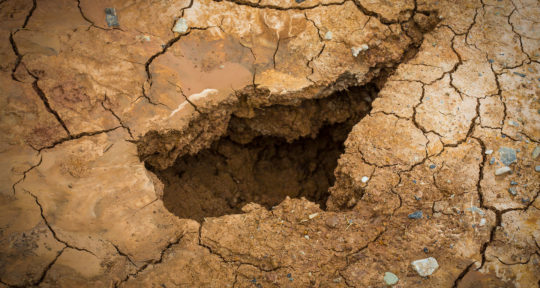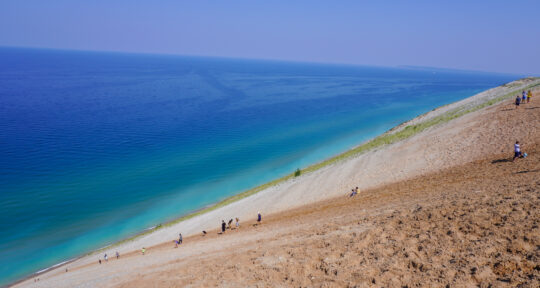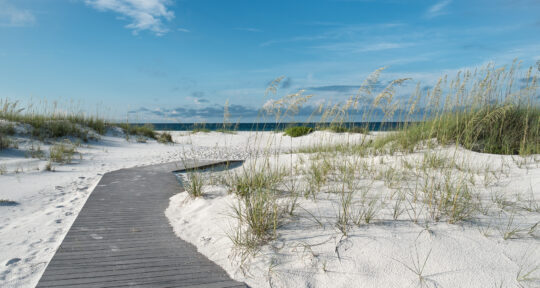The tide is out and the afternoon sun blazes briefly as I stroll the glassy smooth sands of Cox Bay Beach in Tofino, British Columbia. It’s unseasonably warm for January, but although sunshine illuminates the beach, dark clouds threaten on the horizon.
I don’t know it yet, but out west—miles into the Pacific Ocean—chaos is brewing. A storm is being born in the vast waters between Japan and Canada, and by the time it hits the tiny surfing mecca on Vancouver Island’s rugged west coast, the storm’s power will be intense.
Swells will top 20 feet; waves will hit the jagged rock line of the beach during high tide, tossing around massive fallen tree logs like matchsticks, and sending plumes of water soaring high into the air. But before the water gets too rough, a lone surfer tests the smaller swells closest to the beach. Pretty soon, the ocean will be at war.
Terrifying and beautiful
The ocean seduces the storm fanatics too—I know because I am one of them. I’ve always been both terrified and thrilled by big storms that roll through with spears of lightning and rattling booms of thunder. I grew up in the heart of Oklahoma’s tornado alley, with the near-constant threat of giant tornadoes spinning out of the sky.
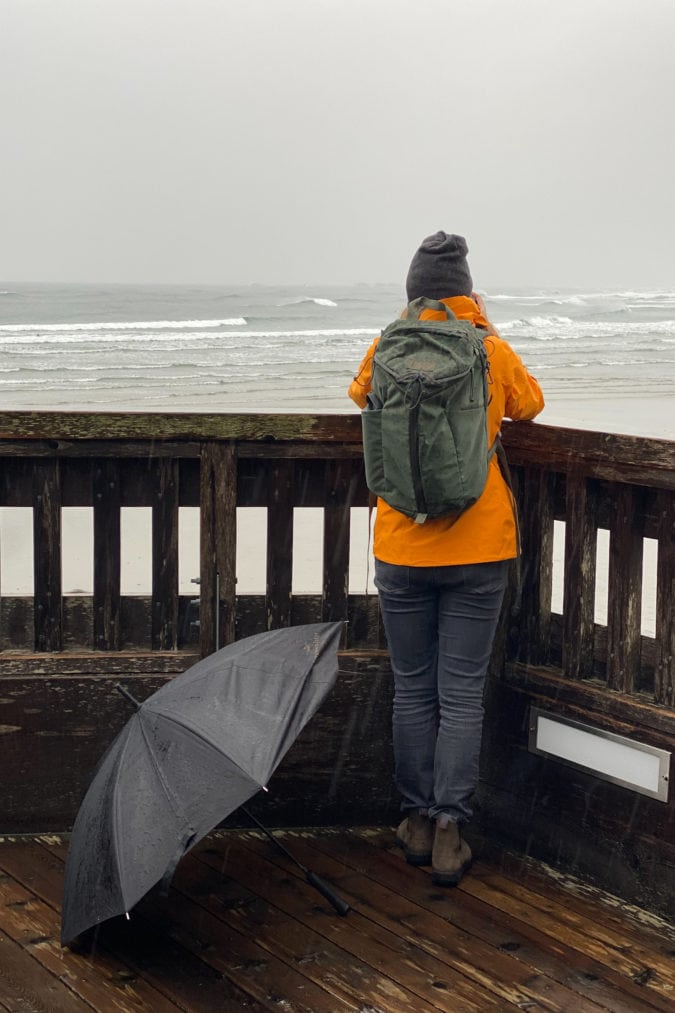
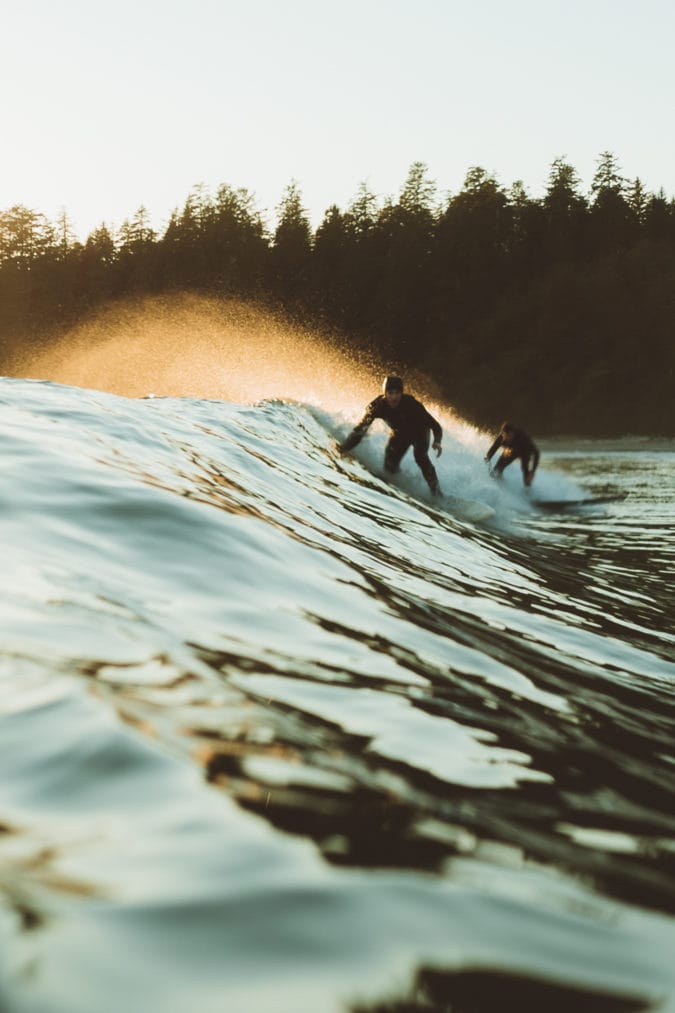
While I’m not a fan of destructive tornadoes, I still love the Great Plains thunderstorms: wind, rain, and lightning set to the beat of hailstones and whipping tree limbs. The prospect of witnessing the majestic storms of Tofino is as alluring to me as the ski slopes are to snow bunnies and snowboarders.
When the storms come to Tofino, as they do dozens of times during the island’s winter months, nature puts on a magnificent and violent show. The ocean swells, rain sheets down with relentless abandon, and the wind carves out beautiful waves. The old gods of the ocean flex their muscles and remind those of us watching the storm just how small we are compared to the vast power of the sea.
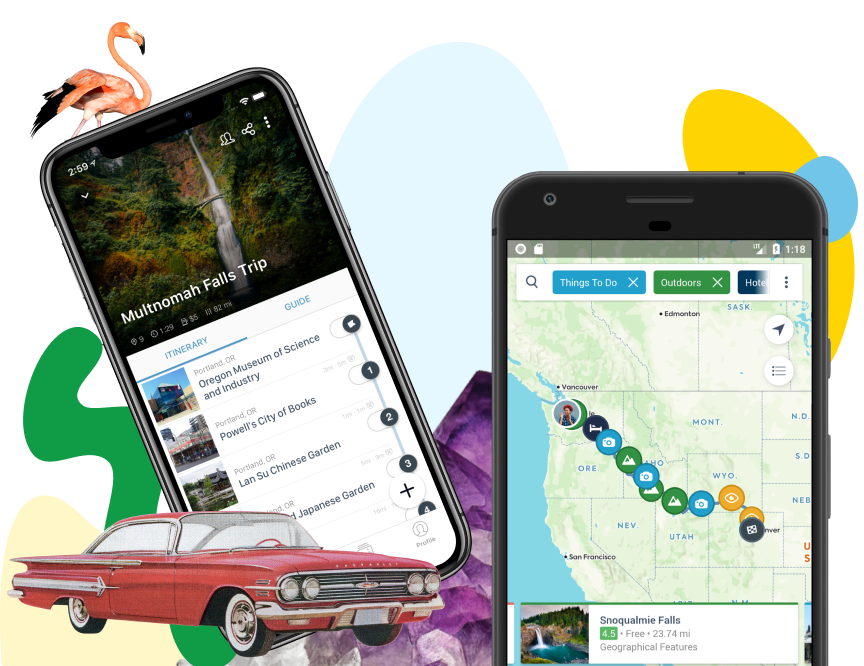
Download the mobile app to plan on the go.

Share and plan trips with friends while discovering millions of places along your route.
Get the AppAlong the beach—in cozy restaurants or ocean-facing hotel rooms—people sip hot chocolate or cocktails while the storm carries on. Fireplaces roar out comforting warmth, and even those brave souls who stand outdoors to feel the storm on their faces seem to be having a good time.
Stormy soul
Say Tofino and most people will give you the Hang Ten hand sign. The town, home to the Tla-o-qui-aht First Nation, has been known for its waves since at least the 1960s, attracting a few intrepid surfers to test the breaks on Chesterman Beach or Cox Bay. By the mid-1980s, more surfers caught on to the stellar waves on Vancouver Island’s west coast.
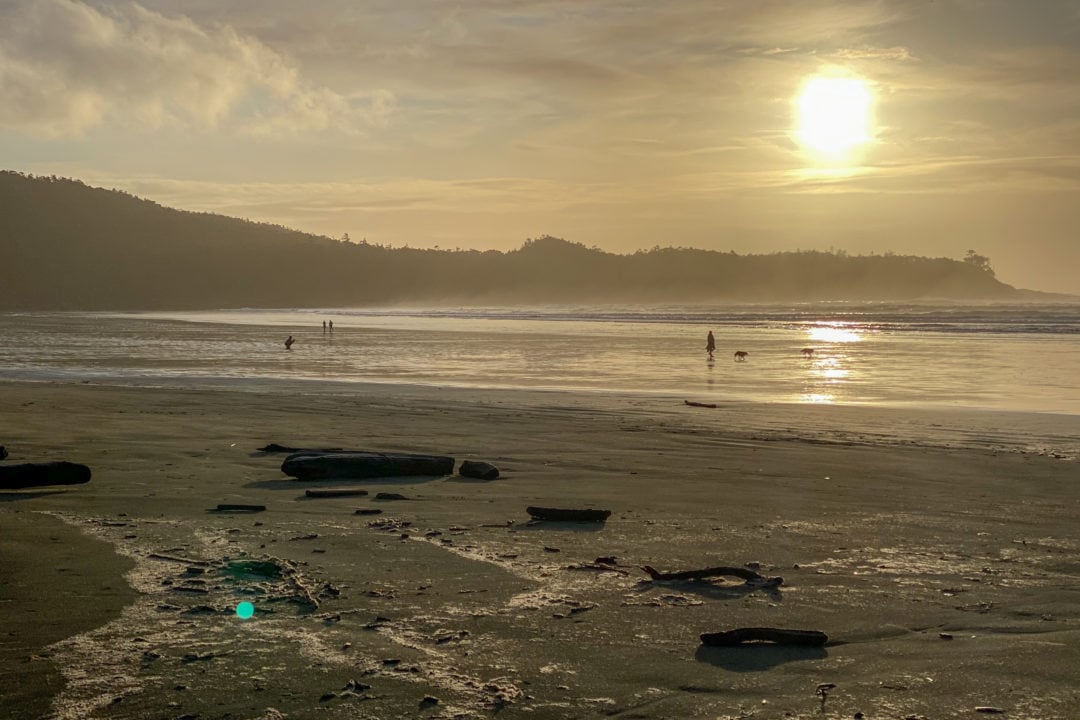
Tofino is surrounded by the UNESCO Clayoquot Sound Biosphere Region, which is steeped in biodiversity and environmental culture. The Douglas firs in nearby Cathedral Grove and Pacific Rim National Park are worth a visit at any time of the year, but the ocean is what really seduces the summer crowds. Tofino has 2,000 year-round residents, but the population swells to an average of 20,000 in the summer as tourists and surf enthusiasts pour in to take advantage of the sunny days, moderate weather and “bitchin’” waves.
Winter storms have always been dramatic here, but now they are a “thing,” a coveted experience that draws visitors to the island during the colder off-season. It’s a lot to ask tourists to come to a summer island in the winter without going skiing on Mount Washington, but the storms in Tofino—wild, untamed, and frightening as they can be—are worth it.
What makes the area perfect for storm watching is mainly its exposed coast. Between Japan and Tofino, no landmass exists to slow down the wind, which builds up so strong that trees along the coast are permanently bent inward. The water temperature never gets warmer than 59 degrees Fahrenheit, but the ocean still releases its heat and moisture, making the island balmier in winter than the rest of Canada. The warmth from the ocean mixes with the colder air above it, energizing the lows that usually start off somewhere near the Aleutian Islands in the Bering Sea. The Aleutian Low begins to intensify, building up strong winds and heavy rains.
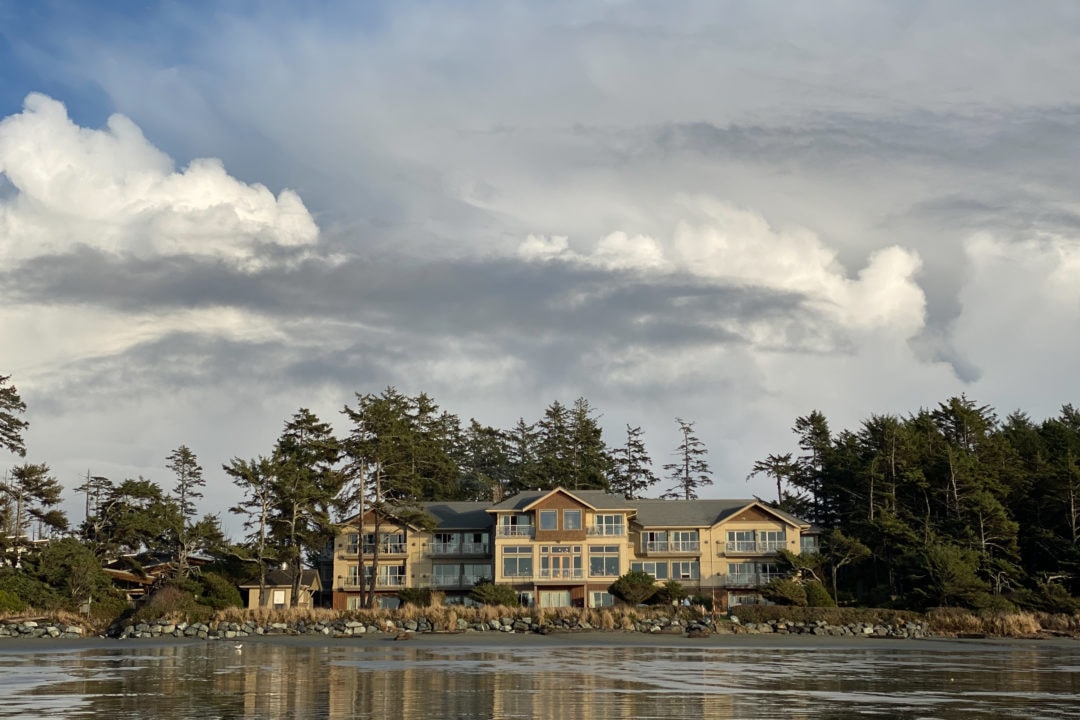
As locals are well aware, these infamous winter storms can be very dangerous. The tide roars in and tosses the cedar logs gathered at the shore like rag dolls. Tim Hackett, owner of the Long Beach Lodge Resort, witnessed the power of the storms long before he opened the resort in 2002—it’s no coincidence that the lodge’s Great Room restaurant is one of the best storm watching spots in the area.
“There’s always these rogue waves that can wash you out, so you’ve got to be really careful,” Hackett says. “A few years ago, there was a woman sitting on one of the cedar logs, but she was facing away from the ocean. This huge wave came, lifted the log, and dropped it on her. A helicopter came and took her away.”
You will get wet
The McDiarmids have been credited with turning their hobby into a tourism draw—the family enjoyed storm watching so much that they built the Wickaninnish Inn in Tofino in 1996. “We always joke that Charles McDiarmid invented storm season,” Hackett says. “There were not a lot of waterfront spots, hotels, or resorts in Tofino in those days. But Charles said, ‘I can get $300 a night and we’ll call it storm season.’ It just immediately became a huge hit. People have been coming ever since to see the storms. Tofino is the one place where if people come and the weather is nice, they are disappointed.”
“Tofino is the one place where if people come and the weather is nice, they are disappointed.”
The deck of the Kwisitis Visitor Centre, located within Pacific Rim National Park Reserve, overlooks the large bay of Wickaninnish Beach. It’s another popular spot to watch the storms, especially for those who don’t mind the sea spray and rain. If you aren’t watching the show from the comfort of the Long Beach Lodge or other resorts, plan to dress accordingly: Waterproof clothes, rain pants, and sturdy gumboots are highly recommended. You will get wet, and you will get cold.
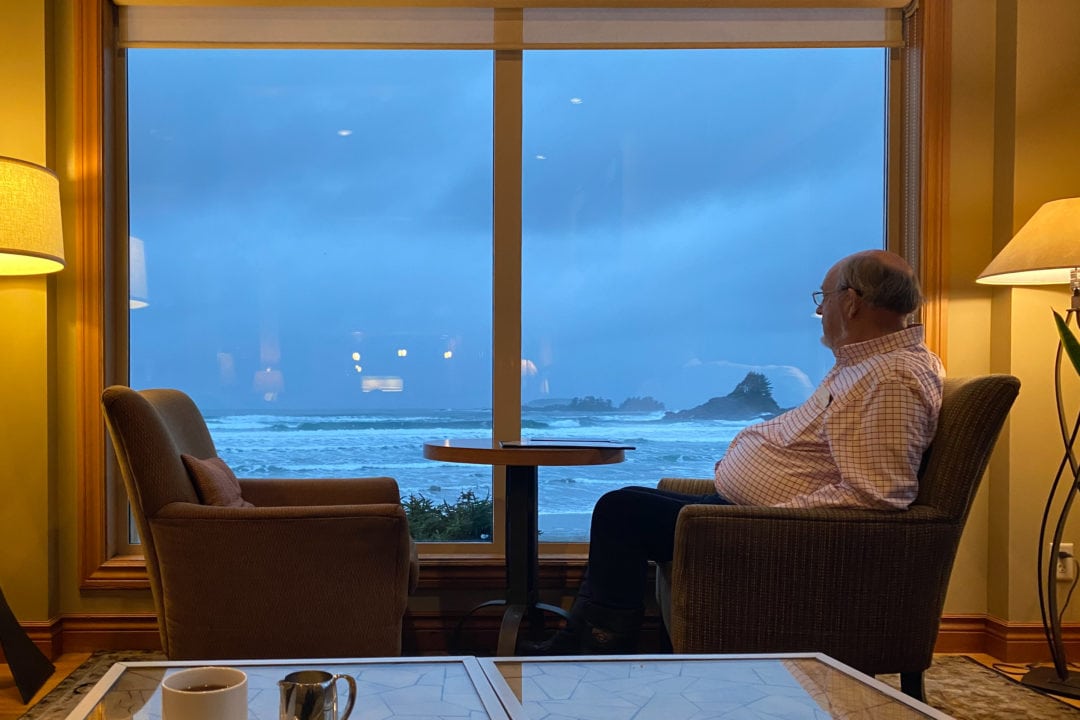
On nearly every beach, signs warn about the dangers of getting too close to the action. Stay well upland beyond the waves and the churning stew of 30-foot logs thrashing about. Don’t stand on the tidal rocks; the tide can rush in fast, and rogue waves can sweep unsuspecting visitors out to sea. “You could get waves up to 60 feet high, but they’ll average 15 to 20 feet,” Hackett says. “Those are big, big waves—global waves.”
Although storms aren’t usually viewed favorably in the tourism industry, Tofino has proven that it’s possible to turn lemons into lemonade. “Storm watching has done a lot for Tofino from an economic perspective,” says Nancy Cameron, executive director of Tourism Tofino. “We all love going out on the beach during a storm. You just breathe. It’s energizing.”

